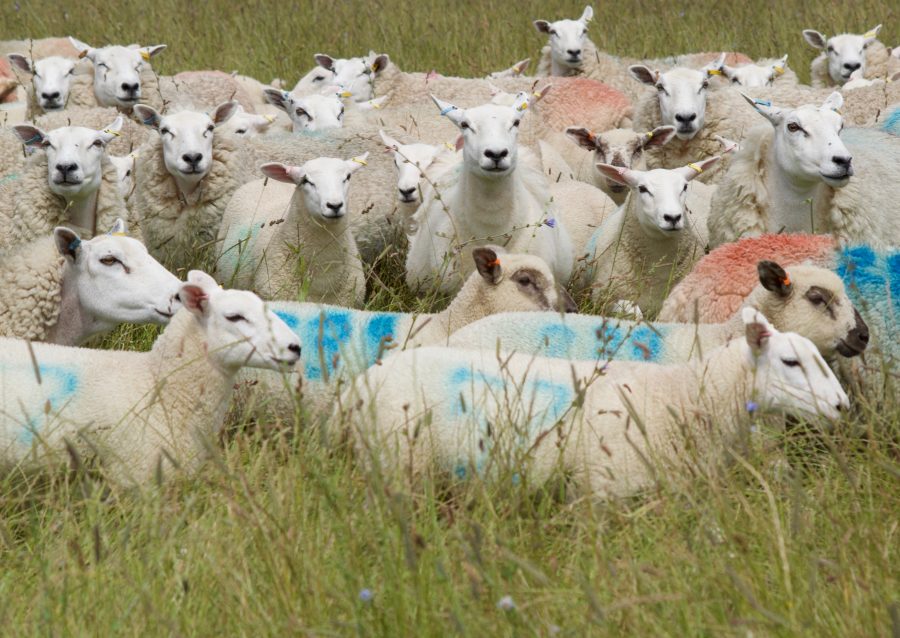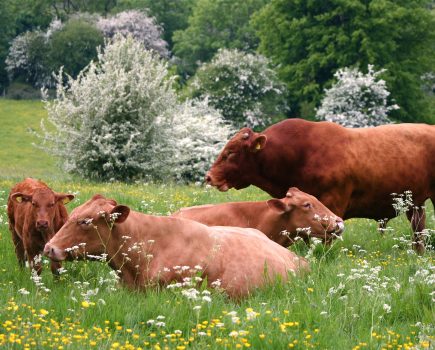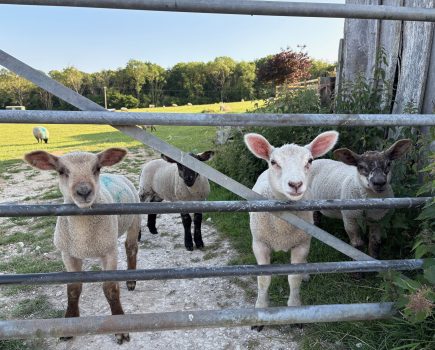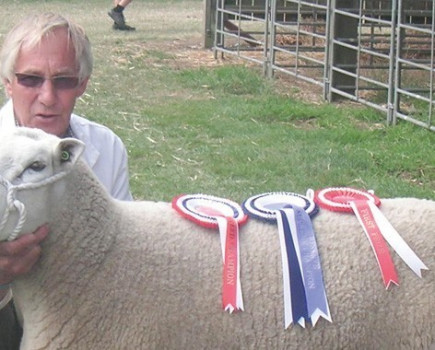While it was good to see sensible prices for lamb and sheep towards the end of last year, the down side seems to be that weather-related tight supplies and decent prices have delivered a treble whammy.
Firstly, consumer demand dropped by some 18% on a volume basis, although higher retail prices did translate into a rather more modest drop in the total spend on lamb of about 10%. The second element, which is probably rather more concerning, is the amount of lamb sucked in from the antipodes from January to November last year. The total value of lamb imported from New Zealand increased by some 205% on 2021 figures and from Australia (although a relatively small volume compared to NZ imports) by some 264%. In part this was due to disruptions in the Chinese market because of ongoing Covid-19 issues leaving both antipodean exporters seeking alternative markets for lambs that would historically have found a ready market closer to home. This, together with some hurriedly negotiated, overgenerous and somewhat unbalanced trade deals given away almost in desperation by our government, made the UK market an obvious target.
In addition to all of this, tight grass supplies last summer had a significant impact on the ability of producers to finish lambs, resulting in a substantial increase of some 12% in the carry-over of lambs (now hoggets) into the new marketing year. With the abundant supplies of lambs now coming forward there has been an inevitable negative impact on prices at the start of 2023, although, to be fair, trade has been variable, with cull prices tending to hold up better than those for lambs.
All of this coming on top of significant increases in the costs of production over the past year is putting the sheep (and other) sector under a bit of pressure, and if this wasn’t sufficient it now seems that the Environmental Land Management scheme, now rebranded and renamed as the Environmental Improvement Plan (EIP), seems to be targeted at placing a considerable burden of the Government’s somewhat muddled green ambitions upon agriculture, which is seen as a relatively soft goal.
To add further insult to injury, the whole scheme looks to be substantially underfunded, insufficient in many cases to cover realistic costs and certainly not guaranteed to encourage participation. As far as many smaller to medium sized producers are concerned, new funding streams simply do not offer any sort of meaningful incentive and certainly fall a long way short of being an appropriate replacement for the farm subsidies that they were intended to supersede.
The cumulative impact of these is a further tightening of the cost/price squeeze facing the sheep sector; sadly, most of the issues arise from factors that are beyond producer control, with much of the price side due to global issues. Sadly, even on a local level, options for some producers to regain a little control by adding value are severely limited due to the dearth, in many areas, of local abattoir and processing facilities.
Unfortunately, sheep producers, as with most other sectors of the agricultural industry, will remain as price takers rather than price makers. On the cost side, however, there are some possible opportunities that may arise from the current challenges; opportunities that have the potential to tick both the environmental and productivity boxes.
For most sheep producers, feed and fertilisers constitute a major proportion of the costs of production, both of which may be significantly reduced by the adoption of rather more sustainable and (dare I say) regenerative farming practices. I’m not talking about organic; my view is that we need to retain the option to resort to some synthetics (fertilisers, sprays etc.), but on a strategic, rather than routine, basis only. There is growing evidence to support the idea that by farming in a manner that improves soil health, producers are not just able to maintain but to increase margins, particularly on mixed farms where sheep may be part of a more diverse farm business.
By and large as sheep producers we already have grass-based production systems that are, relatively, in tune with the environment and biodiversity and which, possibly with a few tweaks, can help build organic matter and soil health with the bonus of carbon capture. We principally need to explore means by which we can build on these advantages and in so doing increase production and productivity off grass (and other more diverse forages) but with reduced reliance on applied fertilisers. A major part of the latter has of course been with us for a long time; the use of nitrogen-fixing crops such as legumes, by which we would normally mean clovers, but there are lots of other species that will do the same job – tares, vetches, lucerne, sainfoin, etc. These can all constitute part of a species-rich and diverse sward for both grazing and conservation; and I haven’t even mentioned herbs, yet.
These are options that, not so many years ago, were regarded as being a bit “out there” but which are now becoming well and truly “mainstream”. There is an increasing number of producers who, with the right breeds of sheep, are producing quality lambs out of relatively high-performing ewes predominantly off highly productive, species-rich, low-input, grass-based systems with only the strategic use of purchased feeds as and when extreme conditions dictate, such as drought. On the latter point, the soil benefits arising from such swards do tend to improve drought tolerance and recovery significantly. It can be done. Such systems also tick the carbon capture box, generating a few bonus green points, a bonus that may be enhanced by reducing methane emissions from our ovine charges.
Sheep consultant Catherine Nakielny has done some good work recently looking at how improving efficiency of sheep production can generate significant positive benefits in reducing the carbon footprint. One of her key conclusions has been in recognising that both in terms of efficiency of production and of minimising methane production per kg of lamb output, it is small to medium sized, productive ewes capable of producing lambs big enough to meet market requirements that will almost always score over most of the bigger sheep that some breeders seemed to be fixated on producing.
Her key recommendations for an efficient sheep that will also reduce methane emissions are to have a ewe that will:
- lamb at 12 months old if required (opinions vary)
- rear twins as a mature ewe
- weigh between 55kg and 65kg as a mature ewe
- lamb successfully for five or six years
- perform well on a grass-based diet.
This is based on the understanding that feed input to any breeding sheep will have two elements, that needed for production and that part needed for maintenance, and it is with the latter that a small to medium-sized ewe will really score highly. At any given stocking rate, a small- to medium-sized productive ewe will produce a greater output of lamb in terms of kg per ha than a larger ewe and will require less energy to do so, and will thus have a lower output of methane per unit of production. It’s not rocket science; any one can do the sums. There really is not much to argue with, is there?
By the time that this goes to press many of you will be lambing: Good luck – I hope that it all goes well.







